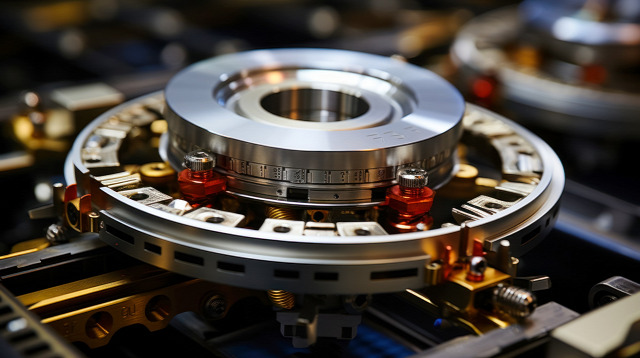
The automotive industry is undergoing a transformative shift toward electrification, and at the heart of this evolution lies a critical component: the bearing. As electric vehicles (EVs) become more prevalent, the demand for specialized bearings designed to meet the unique challenges of electric propulsion systems is surging.
This article delves into the upcoming trends in the electric vehicle bearings market, explores how various industries are leveraging these developments to gain a competitive edge, and provides key data insights, including compound annual growth rates (CAGR) and future market projections.
Market Overview: A Surge in Demand
The global electric vehicle bearings market is experiencing unprecedented growth. According to BIS Research, the market is projected to reach $32,402.0 million by 2034 from $6,907.0 million in 2023, growing at a CAGR of 13.71% during the forecast period of 2024-2034. This robust expansion is fueled by the increasing adoption of EVs worldwide, driven by environmental concerns, government incentives, and advancements in electric mobility technologies.
Key Trends Shaping the Market
Development of Low-Friction Bearings:
- Focus on reducing friction to enhance EV efficiency.
- Lower friction minimizes energy consumption, extending the driving range of electric vehicles.
Introduction of High-Speed Bearings:
- Designed to handle higher rotational speeds in EV motors.
- Ensures efficient operation under increased stress for enhanced reliability and performance.
Adoption of Hybrid Bearings:
- Combines steel rings with ceramic rolling elements to prevent electric pitting.
- Offers superior electrical insulation and enhanced durability for EV motors.
Utilization of Advanced Lubricants:
- Low-friction lubricants reduce energy losses in bearing systems.
- Specially formulated to handle wider temperature ranges and higher speeds in EV operating conditions.
Key Market Segmentation
The electric vehicle bearings market can be segmented based on product type, vehicle category, material, propulsion type, application, and sales channel.
Segmentation 1: by Propulsion
- Battery Electric Vehicle (BEV)
- Hybrid Electric Vehicle (HEV)
- Plug-In Hybrid Electric Vehicle (PHEV)
Segmentation 2: by Application
- Gearbox/Transmission
- Motor
- E-Axle
- Wheel
Request for a sample research report on the Electric Vehicle Bearings Market
Segmentation 3: by Vehicle
- Passenger Vehicle
- Commercial Vehicle
Segmentation 4: by Sales Channel
- OEM
- Aftermarket
Segmentation 5: by Region
- North America
- Europe
- Asia-Pacific
- Rest-of-the-World
Industry Applications and Competitive Advantages
Automotive Manufacturers: Leading automakers are investing in advanced bearing technologies to improve vehicle efficiency and performance. For instance, the integration of low-friction and high-speed bearings contributes to enhanced drivetrain efficiency, providing a competitive edge in the EV market.
Bearing Manufacturers: Companies specializing in bearing production are expanding their portfolios to include products tailored for electric vehicles. By developing bearings that address specific EV challenges—such as electric pitting and high operational speeds—these manufacturers position themselves as essential partners in the EV supply chain.
Lubricant Producers: The demand for specialized lubricants compatible with EV bearings presents opportunities for lubricant manufacturers. Developing products that maintain performance under the unique conditions of electric vehicles allows these companies to tap into a growing market segment.
Get more insights on the automotive market research reports.
Future Market Outlook
The electric vehicle bearings market is poised for significant advancements, driven by continuous innovation and the global shift toward sustainable transportation. Key factors influencing future growth include:
- Technological Innovations: Ongoing research into materials science and lubrication technology will lead to bearings with improved efficiency, durability, and performance.
- Expansion of Electric Mobility: As electric vehicles become more mainstream, the corresponding demand for specialized bearings will continue to rise, encouraging further market development.
- Regulatory Support: Government policies promoting electric vehicle adoption will indirectly boost the bearings market, as manufacturers scale up production to meet regulatory targets.
Conclusion
The electric vehicle bearings industry is at the cusp of a transformative era, characterized by rapid growth and technological innovation. Industries across the automotive supply chain are leveraging these trends to enhance performance, achieve sustainability goals, and secure a competitive advantage in the evolving landscape of electric mobility. As the market progresses, stakeholders who invest in advanced bearing technologies and adapt to emerging demands will be well-positioned to thrive in the electrified future.

